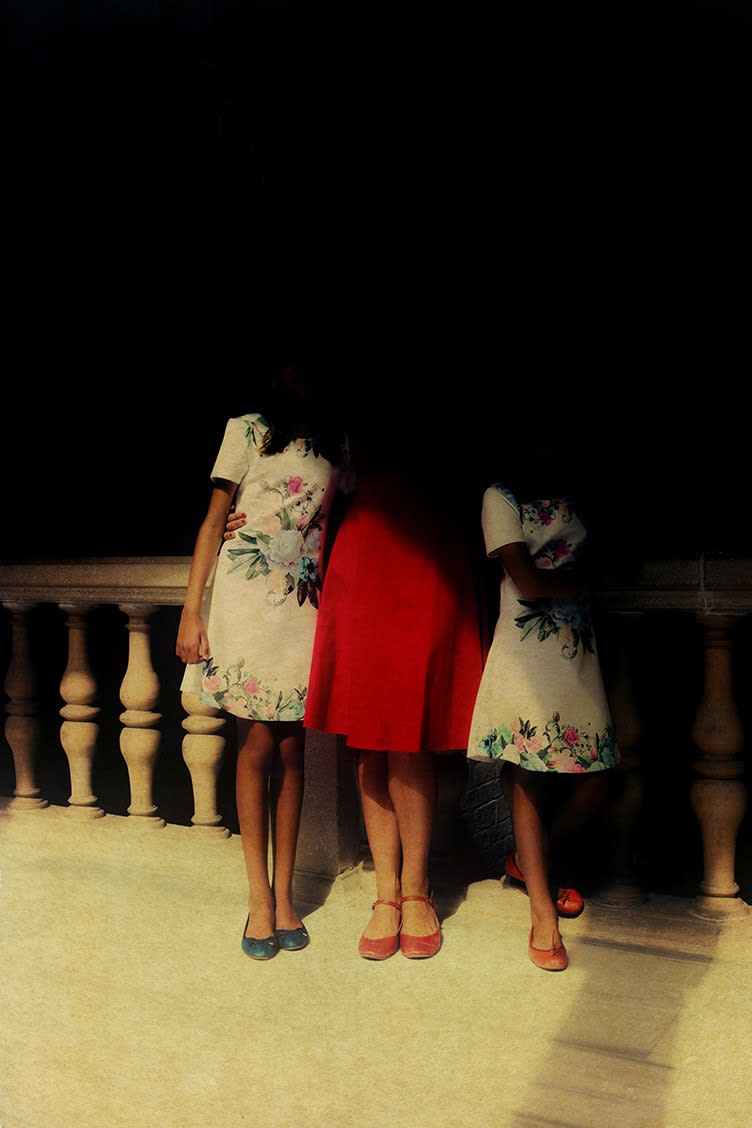
Albarrán Cabrera ES, b. 1969
This is you here #145, 2017
Pigments on Japanese paper
and gold leaf
and gold leaf
25.5 x 17 cm
Edition of 20
© Albarrán Cabrera
THIS IS YOU HERE When we look at a photograph related to our experiences, our intangible and unreliable memories surrender to the printed image. The concrete photographs replace our abstract...
THIS IS YOU HERE
When we look at a photograph related to our experiences, our intangible and unreliable memories surrender to the printed image. The concrete photographs replace our abstract memories, and our identity is reaffirmed by that set of photographs. Identity is composed of relatively permanent self-concepts, such as awareness of our physical features, aspects of our personality and knowledge of our abilities and skills. Besides, identity is not restricted to the current moment; it includes future or possible selves and past selves.
We started work on the series some time ago, when a friend gave us some negatives and old postcards he had found inside a picture wallet that had been thrown away in the street. After scanning the negatives, we found they were family portraits taken by an amateur photographer some forty years earlier. All shared a common feature: they were underexposed, so it was really hard to recognize the people in the photographs; they could have been any family. Those moments, that formed part of the photographer’s identity, could also be ours. We decided to use our own photographs along with the anonymous ones, unifying them all using the same printing process and thus generating the identity and memories of someone who never existed. Creating this fictitious family has helped us to go deeper into the concept of identity and as a result we have become interested in the relation between place and identity. Place and identity are bound to one another. Not only do places give us spatial information about the people portrayed but places also become a key narrative element and tell us about those who inhabit them.
We hope that our photographs trigger subconscious associations in the viewer based on their memories. We even prefer that the viewer interprets the photograph in a way different from how we originally imagined. In this way, by depicting familiar places, we ask the viewer to see them through ‘new’ eyes as if these places were being seen for the first time, when everything is suspended between past and future.
Albarrán Cabrera
When we look at a photograph related to our experiences, our intangible and unreliable memories surrender to the printed image. The concrete photographs replace our abstract memories, and our identity is reaffirmed by that set of photographs. Identity is composed of relatively permanent self-concepts, such as awareness of our physical features, aspects of our personality and knowledge of our abilities and skills. Besides, identity is not restricted to the current moment; it includes future or possible selves and past selves.
We started work on the series some time ago, when a friend gave us some negatives and old postcards he had found inside a picture wallet that had been thrown away in the street. After scanning the negatives, we found they were family portraits taken by an amateur photographer some forty years earlier. All shared a common feature: they were underexposed, so it was really hard to recognize the people in the photographs; they could have been any family. Those moments, that formed part of the photographer’s identity, could also be ours. We decided to use our own photographs along with the anonymous ones, unifying them all using the same printing process and thus generating the identity and memories of someone who never existed. Creating this fictitious family has helped us to go deeper into the concept of identity and as a result we have become interested in the relation between place and identity. Place and identity are bound to one another. Not only do places give us spatial information about the people portrayed but places also become a key narrative element and tell us about those who inhabit them.
We hope that our photographs trigger subconscious associations in the viewer based on their memories. We even prefer that the viewer interprets the photograph in a way different from how we originally imagined. In this way, by depicting familiar places, we ask the viewer to see them through ‘new’ eyes as if these places were being seen for the first time, when everything is suspended between past and future.
Albarrán Cabrera
BE THE FIRST TO KNOW
To stay up to date about artist news, new exhibitions and available works, sign up for our newsletter.
* denotes required fields
We will process the personal data you have supplied in accordance with our privacy policy (available on request). You can unsubscribe or change your preferences at any time by clicking the link in our emails.
